Take candy core samples with this science activity
Act like a geologist as you drill ‘core samples’ from candy bars using a straw
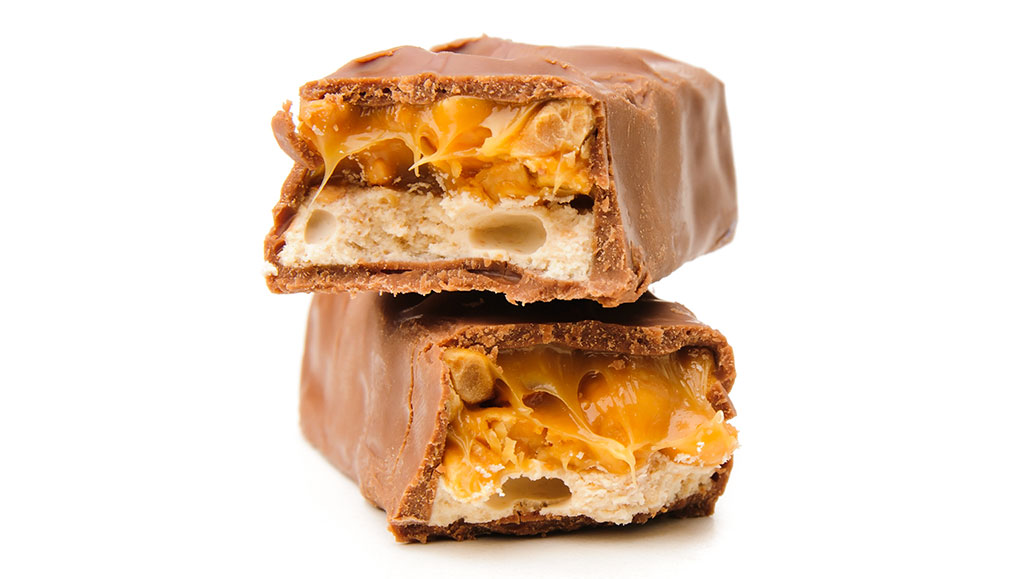
In this activity, let’s use straws to drill “core samples” out of candy bars.
serts/E+/Getty Images
Listen to this story:
Have feedback on the audio version of this story? Let us know!
Objective: Act like a geologist by drilling “core samples” from candy bars using a straw
Areas of science: Geology
Difficulty: Easy beginner
Time required: 10-20 minutes
Prerequisites: None
Material availability: Readily available
Cost: Very low (under $20)
Safety: No hazards
Credits: Ben Finio, PhD, Science Buddies
Note: The candy core project is a science activity, not an experiment. That is, it does not involve gathering and analyzing data to test a specific hypothesis. To learn how you can transform a science activity like this one into a fully-fledged experiment, check out our instructions and advice here!
Core samples are cylindrical pieces drilled from soil and rock. These samples allow scientists to study the properties and geological history of the Earth — or the moon or other planets. In this activity, make your own “core samples” from candy bars, and see if you can identity what type of candy you’re looking at just from studying samples.
Materials
- Assorted mini or fun-size candy bars like Snickers®, 3 Musketeers® and Milky Way®. Avoid solid or “hard” chocolate bars like Hershey® bars.
- Clear drinking straws (biodegradable/compostable straws are more environmentally friendly than plastic straws!)
- Scissors
- Small plate
- Paper towels
Prep work
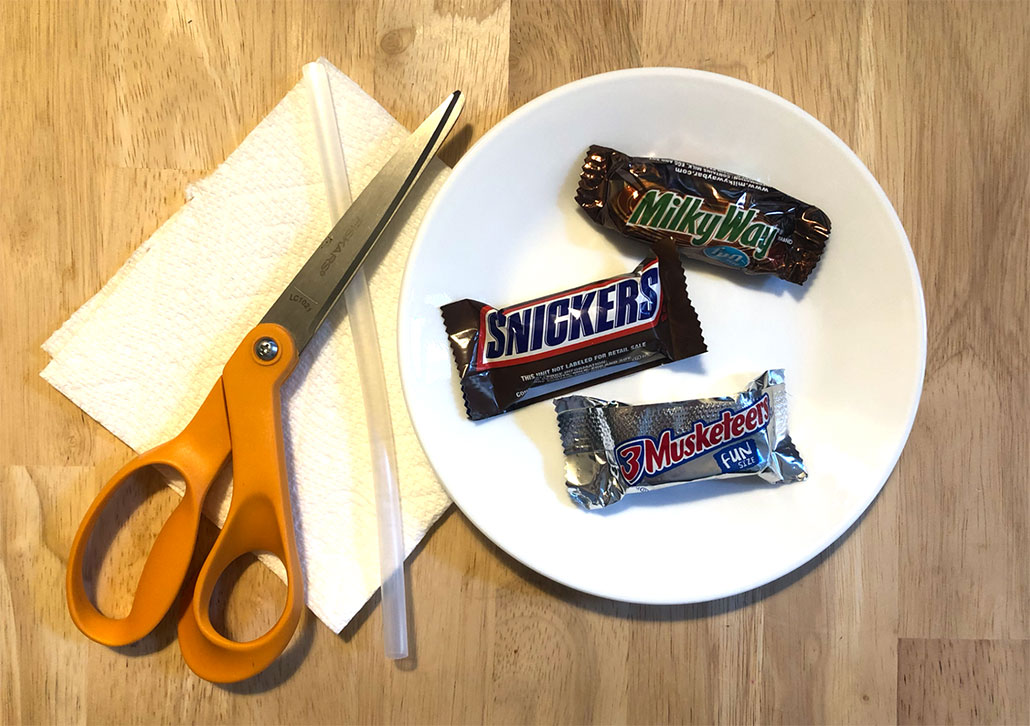
This activity works best with candy bars that are at or slightly above room temperature. If the candy bars are too cold, it will be hard to poke a straw through them, and they will crunch or break. If they are too warm, they will be squishy and gooey, making it difficult to get a nice sample. If necessary, briefly put your candy bars somewhere to raise or lower their temperature. For example, you can put them in the refrigerator for a few minutes to chill them or leave them on a sunny windowsill to warm them.
Instructions
1. Unwrap a candy bar and put it on a plate.
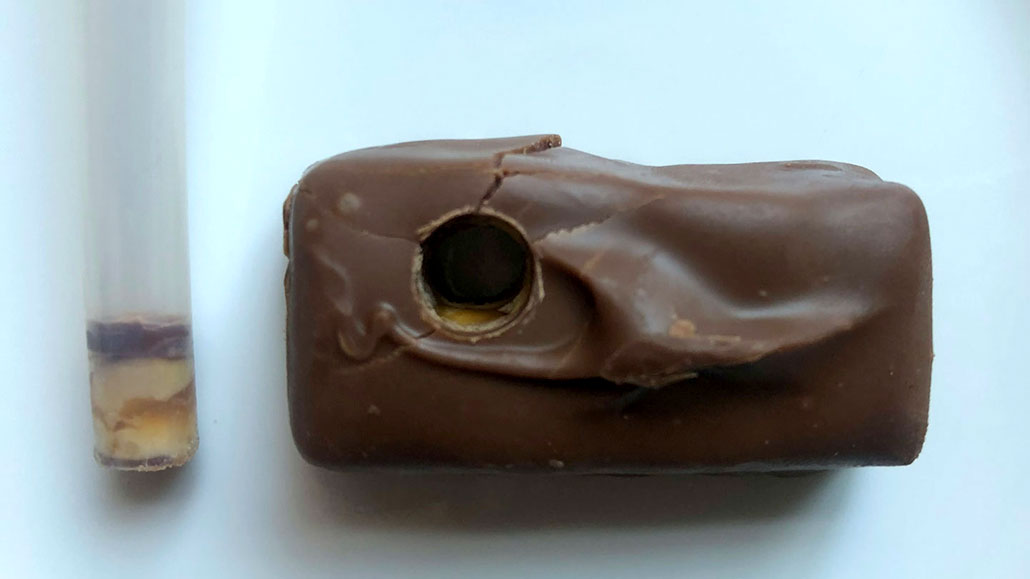
2. Carefully poke a straw through the top of the candy bar.
3. Make sure you poke the straw all the way through the bottom of the candy bar. You may need to gently twist or wiggle the straw to get it all the way through.
4. Gently pull the straw back out of the candy bar.
5. Use a damp paper towel to wipe off the outside of the straw.
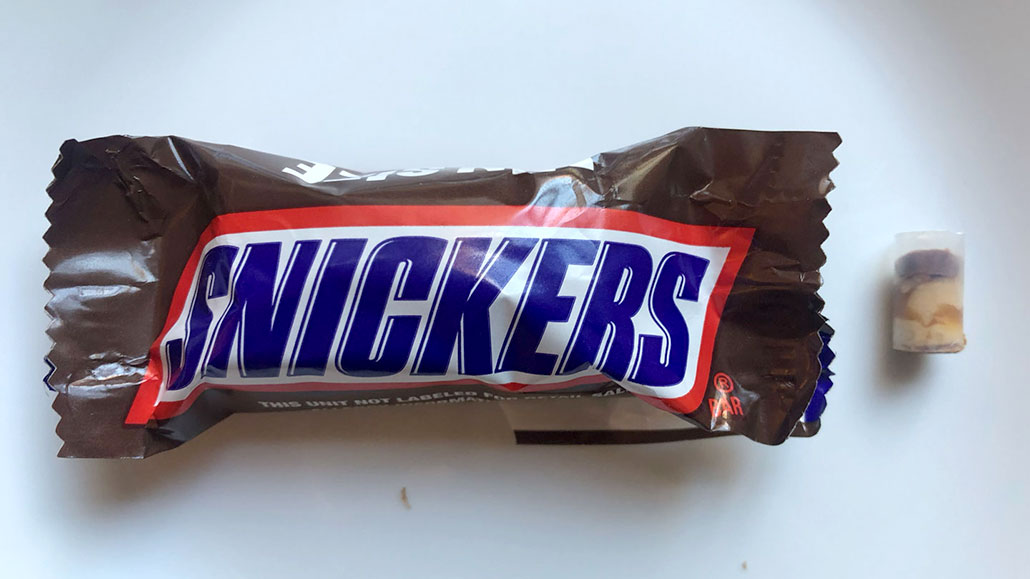
6. Use scissors to cut the straw just above the candy inside.
7. Place your core sample next to the wrapper for the candy bar, so you can keep track of which candy bar it came from.
8. Repeat steps 1–7 for at least one other type of candy bar.
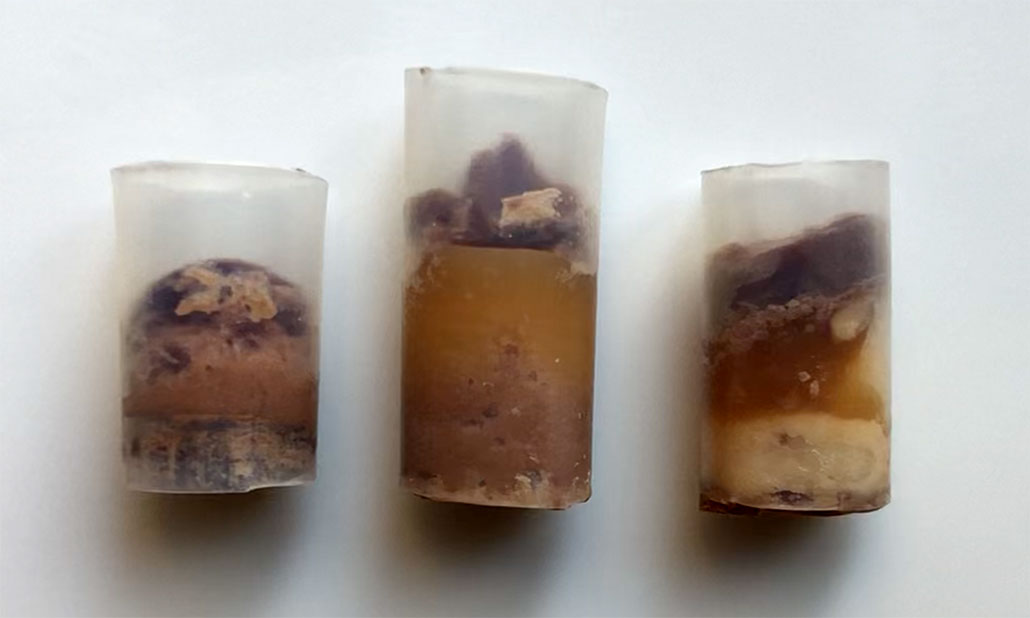
9. Place your core samples side by side. (Be careful not to lose track of which one is which!)
10. Have a friend take a core sample without showing you which candy bar they use and then give you the sample.
Cleanup
You can “dispose” of any remaining candy bars and core samples by eating them — just do not eat too much candy all at once!
What happened?
Many candy bars have multiple layers of different ingredients like caramel and chocolate. When you take a cylindrical “core sample” using a clear plastic straw, these layers are clearly visible inside the straw. You can do a side-by-side comparison of the layers in different candy bars. You can also match an unknown sample to an existing sample to identify the source of the unknown sample. Read the next section to learn more about how geologists use real core samples to explore Earth and other planets.
Digging deeper
Geologists use large drills to take core samples of soil and rocks on Earth. They examine the core samples for different layers, which can tell us things about Earth’s history, like the climate or the types of animals that were alive at a certain time. Scientists can even figure out when volcanoes erupted in the past by looking for layers of volcanic ash!
We can also use core samples to learn about other planets and bodies in our solar system. Previous NASA missions gathered core samples from the moon, and the Mars Perseverance rover will gather core samples from rocks and soil on Mars for future analysis.
For further exploration
- This activity can be done with layers of Play-Doh® instead of candy.
- If you have difficulty taking cylindrical samples with drinking straws, you can cut the candy bars in half with a knife to view their cross-sections and see and compare the layers.
This activity is brought to you in partnership with Science Buddies. Find the original activity on the Science Buddies website.








